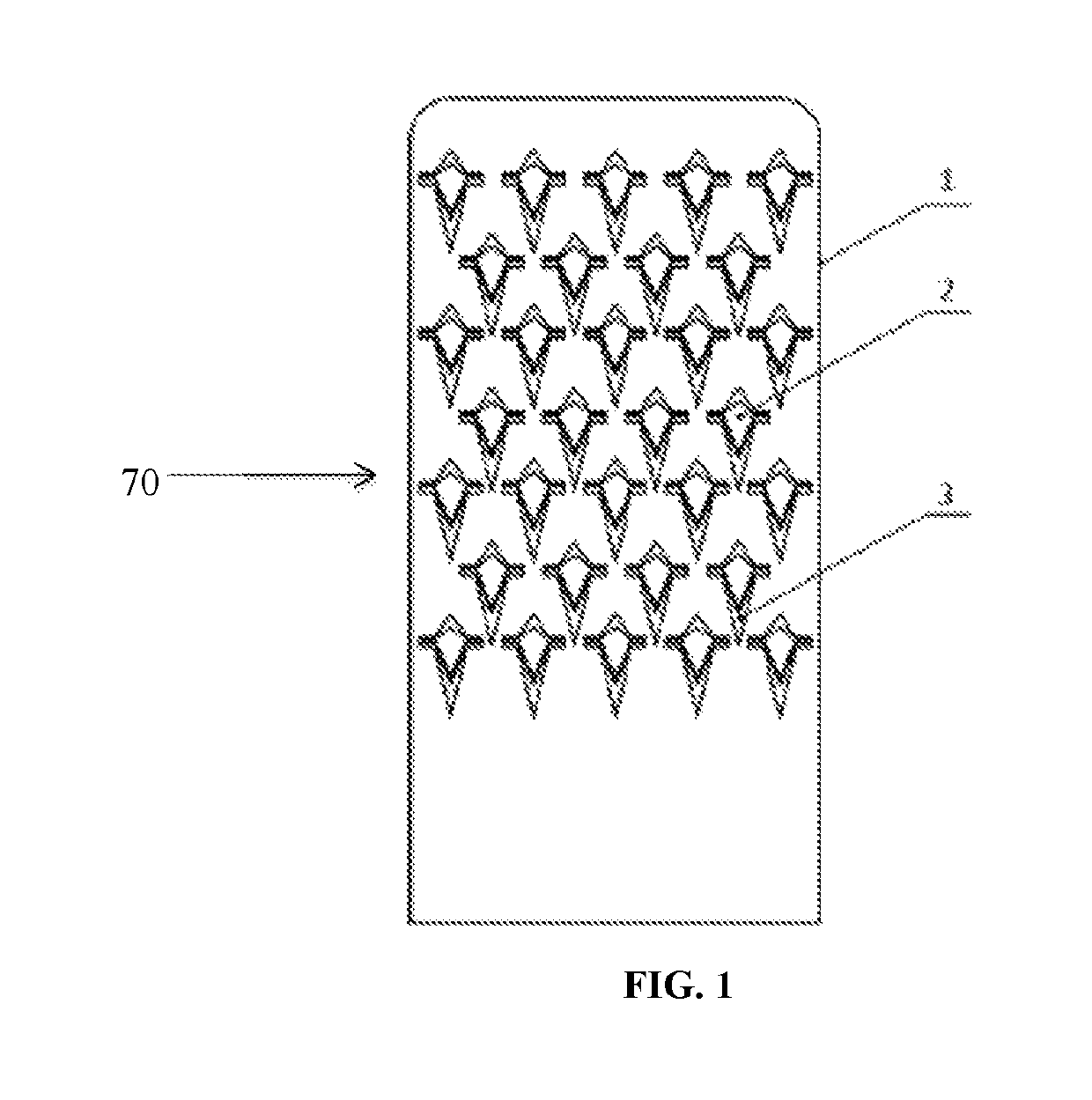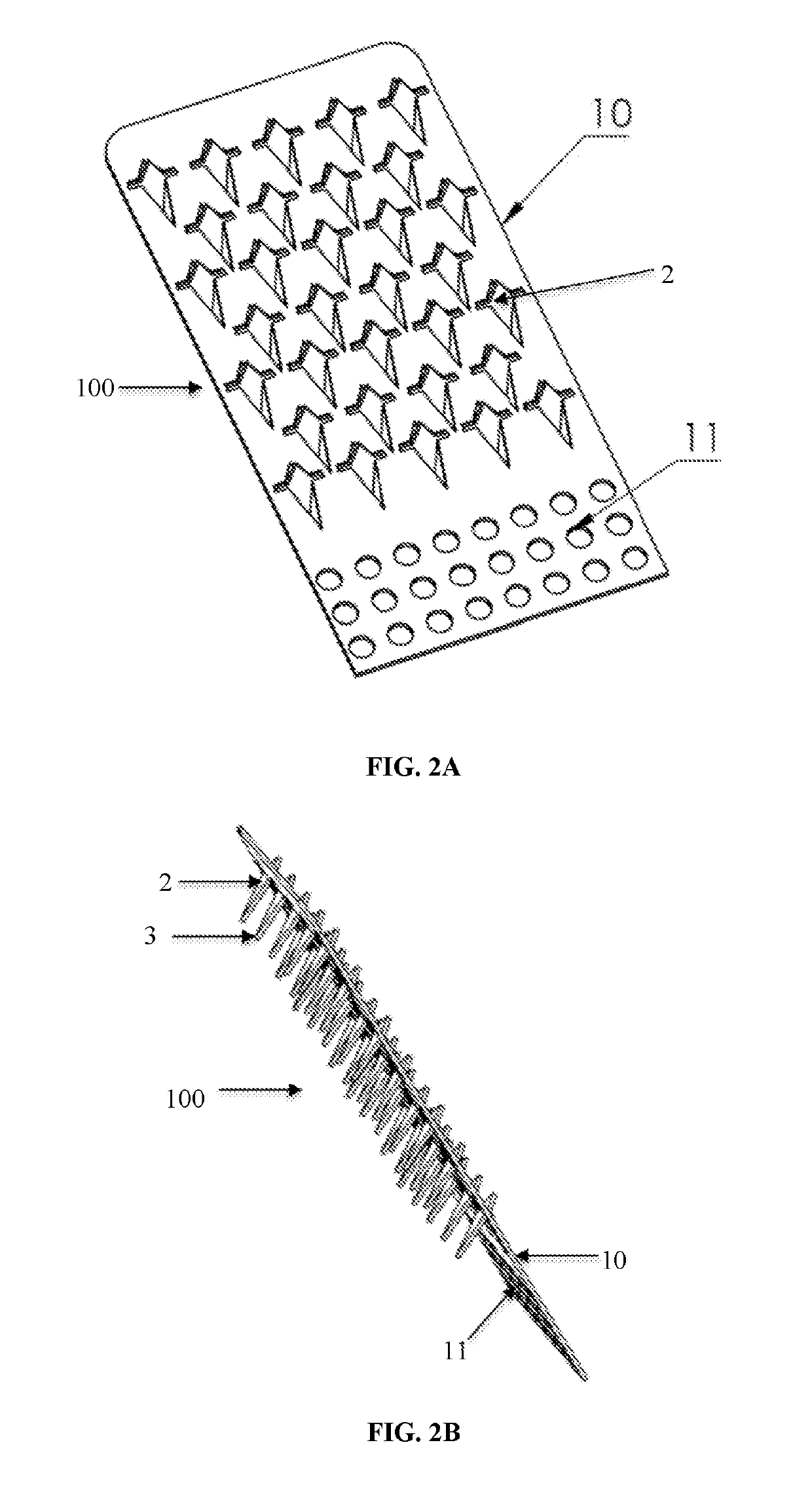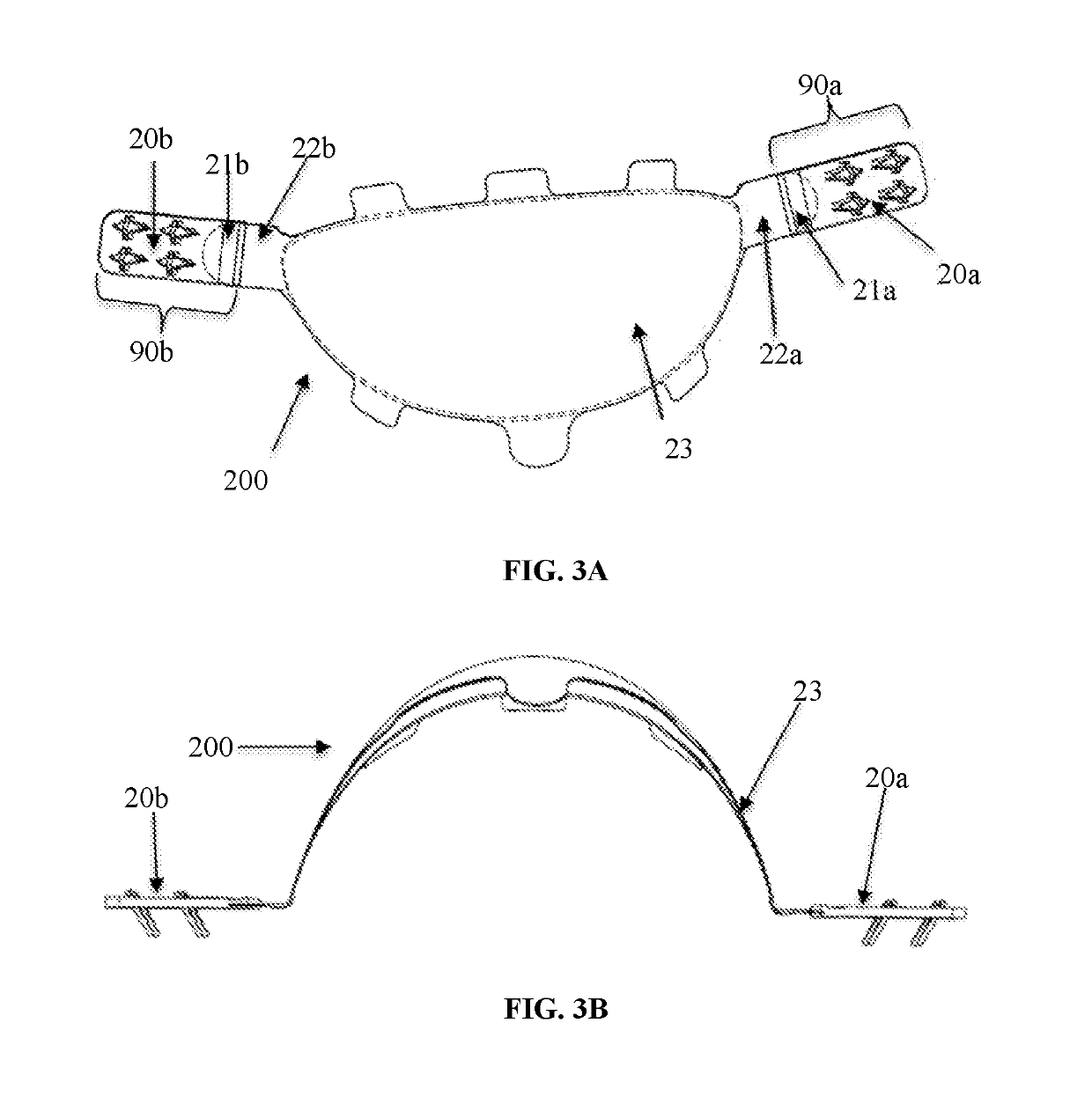Implantable fastener for attachment of a medical device to tissue
a technology of medical devices and fasteners, which is applied in the field of surgical staples, can solve the problems of recurrent ptosis, recurrent ptosis, and only slowing down recurrent ptosis, and achieves the effects of improving the stability and stability of the patient's body
- Summary
- Abstract
- Description
- Claims
- Application Information
AI Technical Summary
Benefits of technology
Problems solved by technology
Method used
Image
Examples
example 1
re of a Repositionable Fastener with Swivel Anchors by Laser Cutting
[0138]A thin oriented film made of poly-4-hydroxybutyrate (P4HB) with a uniform thickness of 0.7 mm, was placed on a laser-cutting table (FIG. 9 shows the laser setup). The setup includes a laser control unit (92), a laser head with CAD (computer aided design) XYZ motion (98), a work station (94), a film substrate (102) and a laser cut pattern to form a flexible anchor (96). A CO2 laser source was located above the film, and was used to cut a pre-determined pattern of the perimeter of the repositionable fastener, 30 swivel anchors, and 24 pores (holes) as shown in FIG. 8. To create the pattern of swivel anchors and the perimeter of the fastener, the laser power was set between 40 to 60 watts with a focal distance ranging from 0.5 to 2.0 cm. Once cutting was complete, the cut shape of film was separated from the excess film material, and placed onto an angle plate consisting of a metal base plate with orientation pin...
example 2
re of a Repositionable Fastener with Swivel Anchors by Die Cutting
[0140]A thin oriented film made of poly-4-hydroxybutyrate (P4HB) of uniform thickness (ranging from 0.5 to 1.0 mm) was cut to produce the anchor pattern shown in FIG. 2 by pressing a custom steel rule die onto the P4HB film instead of using a laser to cut the film as described in Example 1. The subsequent steps described in Example 1 wherein the swivel anchors were produced from the cut film with the metal base plate and using orientation pins as illustrated in FIG. 10 was used to produce the heat-set repositionable fastener with swivel anchors.
example 3
re of a Repositionable Fastener with Swivel Anchors by Injection Molding
[0141]A two-part mold with mating cavities was machined to generate the pattern shown in FIG. 1. Molten poly-4-hydroxybutyrate (P4HB) was injected through an injection port (gate) into the mold with a pressure of 4-6 tons to fill out the cavity formed by the assembled top and bottom halves of the mold, and was continued until excess polymer flowed out of the relief ports. The mold was allowed to cool to room temperature, disassembled, and the repositionable fastener removed from the mold. Excess polymer was trimmed form the molded fastener. An illustration of a two-part mold that can be used to produce a fastener with 4 swivel anchors is shown in FIG. 11.
PUM
 Login to View More
Login to View More Abstract
Description
Claims
Application Information
 Login to View More
Login to View More - R&D
- Intellectual Property
- Life Sciences
- Materials
- Tech Scout
- Unparalleled Data Quality
- Higher Quality Content
- 60% Fewer Hallucinations
Browse by: Latest US Patents, China's latest patents, Technical Efficacy Thesaurus, Application Domain, Technology Topic, Popular Technical Reports.
© 2025 PatSnap. All rights reserved.Legal|Privacy policy|Modern Slavery Act Transparency Statement|Sitemap|About US| Contact US: help@patsnap.com



